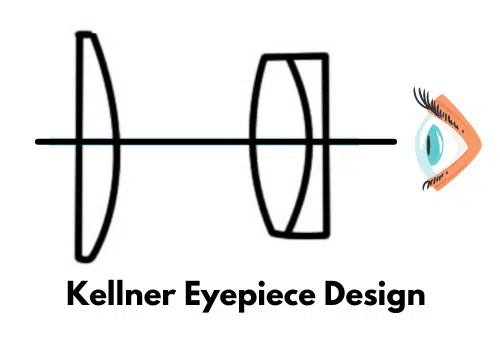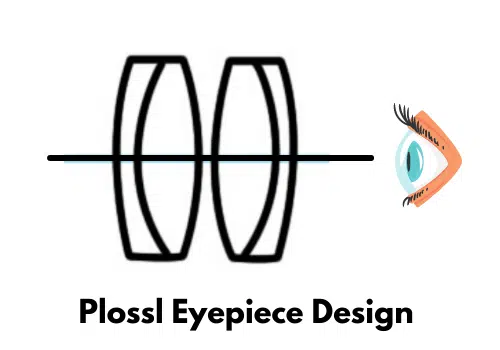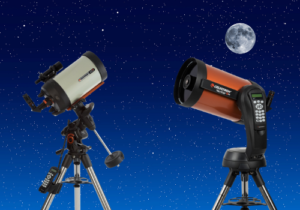Plossl vs Kellner Eyepieces: Which Is The Best?
Disclosure: This post contains affiliate links and I may earn a small commission (at no extra cost to you) if you click through and make a purchase. Thanks in advance – I really appreciate it!
I have used both Kellner & Plossl eyepieces and a few others, and I can tell you that they all are quite different from each other in terms of the quality of the image that they produce.
In this article, we will only focus on the differences between Plossl and Kellner eyepieces.
Key Takeaways:
Plossl vs Kellner
Kellner eyepieces have 3 lenses cemented together and have a 35-50 degree field of view. They have decent eye relief and little curvature of field. Plossl eyepieces have 4 lenses that are paired in two doublets. They have a 50-56 degrees field of view, better eye relief, and cost more than Kellners.
In stargazing, eyepieces are as important as telescopes are. Choosing the most appropriate can completely change your experience in using telescopes. Poorly chosen eyepiece might give you poor experience and sometimes even make stargazing difficult.
So I sincerely hope that this article helps you understand the similarities and differences between Plossl and Kellner eyepieces so that you can an informed decision and choose the best one for yourself.
Later in the article, I will also give my top recommendations for both the best Kellner as well as the best Plossl eyepieces.
Kellner Eyepieces
Kellner eyepieces were first designed by Carl Kellner in 1849.

Kellner eyepieces use three glass elements in two groups to minimize color fringing.
The design uses a planoconvex, two cemented-element eye lens and a large convex field lens.
However, some lateral color error is apparent when looking at bright subjects, such as Jupiter or Venus, against a dark sky.
These are considered to be the least expensive eyepieces for serious astronomy and are offered in focal lengths from about 6mm to 40mm.
These eyepieces have about 35 to 50 degrees apparent fields of view and reasonable eye relief, though quite short for high magnifications.
Kellner eyepieces work perfectly with small and medium-sized telescopes.
They have good center sharpness but exhibit some field curvature and astigmatism.
Edge sharpness is just satisfactory, nothing to boast about, as is the apparent field of view. They are most useful in medium and longer focal lengths for terrestrial, planetary, and lunar viewing.
Major telescope brands such as Celestron supplies Kellner eyepieces with their r least expensive telescopes and still may.
Plossl Eyepieces
An Austrian inventor Georg Simon Plossl came up with the Plossl eyepiece design in 1860.

This design features 4 lenses that are paired in two close-set doublets for the eye lens and the field lens.
This four-element Plössl design is the most popular eyepiece optical design that gives you excellent image quality, good eye relief, and a 50 to 56 degrees apparent field of view. High-quality Plössl eyepieces provide high contrast and sharpness across the entire field of view.
The Plossl design has become the mainstay of the modern ocular business and probably represents the best value in terms of performance and price, especially in medium and long focal lengths.
Plossls cost a bit more than the Kellners as Plossls are expensive to manufacture because they require good optical glass and precisely matched concave and convex doublet surfaces to prevent internal reflections.
That said, I should also tell you that not all Plossls are created equal.
Inexpensive Plossls that are manufactured using low-quality lenses are susceptible to internal reflections when viewing bright objects at high magnification.
These low-quality Plossls lack an internally blackened lens barrel with thread baffles and blackened lens edges and sophisticated anti-reflection multi-coatings, all of which are a necessity to produce an excellent image.
If well made, Plossls are bright, with good contrast, and a flat field, and excellent sharpness. Their eye relief is limited to about 70-80% of their focal length.
Plossls are available from many suppliers in a wide range of focal lengths in 1.25″ and 2″ sizes.
The focal length range for 1.25″ Plossls is about 6mm to 45mm.
Plossls provide very good eye relief for eyeglass wearers in focal lengths of about 25mm and longer.
Non-eyeglass wearers can usually tolerate Plossls as short as about 10-12mm before their eyelashes start brushing the ocular lens.
Kellner vs Plossl – What are the differences?
| Kellner | Plossl | |
|---|---|---|
| Number of lenses | 3 | 4 |
| Field of view | 35-50 degrees | 50-56 degrees |
| Eye relief | Adequate | Good |
| Price | Inexpensive | Mid-range |
Kellner vs Plossl – Which one is better?
Here’s the short answer – Plossl eyepieces are generally better than Kellner eyepieces, but they also tend to be more expensive.
As I mentioned earlier in the article, not all Plossls are created equal, which simply means that there are good Plossls and then there are bad Plossls.
I must also warn you that some of these bad Plossls may actually turn out to be worse than any run-of-the-mill Kellner.
The quality of a Plossl eyepiece completely depends on the brand and model, so be very careful in our selection.
If you do choose to go with a Plossl eyepiece, I highly recommend spending some extra cash to get yourself a decent good quality branded Plossl eyepiece rather than going for a cheap, generic eyepiece which is a Plossl only for the namesake.
Kellner eyepieces, on the other hand, are generally pretty close to each other in terms of quality so there’s little chance you will get much variance in image definition between brands.
If you are completely new to stargazing, Kellner eyepieces are absolutely fine. As you learn more about astronomy and you gain more experience with time, you may want to move to Plossls or even higher-quality eyepieces.
If you are buying your first telescope, and you are choosing between the telescope that includes a Kellner or a telescope that comes with a Plossl, with all the other specs being similar, pick the telescope that’s offering you the Plossl, even if it’s slightly more expensive.
As long as you take good care of them, Plossls can last you a lifetime, and you will be able to use them with your next telescope if you upgrade at some point.
Conclusion
If you’re still wondering between a Kellner vs Plossl, my advice to you would be – invest a little extra cash and go for a good quality Plossl. It may very well last you a lifetime and in the long term, you will definitely consider it to be a worthwhile investment.
Although Kellner eyepieces will help you learn a lot in the beginning but soon will realize that you’re missing out on something, and eventually you will be tempted to spend money on another good quality eyepiece.
So save yourself this future unnecessary expense and just buy a Plossl.
Written by:

Kavya Joshi
My love affair with space began in a field in India at the age of 7, when I looked up at the Milky Way for the first time. Ever since, I have been attempting to cram in every fact about the Universe, I can find into my head.
ABOUT US
We are a team of active amateur astronomers, here to help you with all your astronomy and science related needs – this is anything, from reviewing the latest telescopes to be released to talking about gravity and neurons. The Big Bang Optics was started because of our love for astronomy and to help others like us find the best telescope and accessories.
LEGAL DISCLAIMER
The Big Bang Optics is a participant in the Amazon Services LLC Associates Program, an affiliate advertising program designed to provide a means for sites to earn advertising fees by advertising and linking to Amazon.com. The Big Bang Optics also participates in affiliate programs with Clickbank and other sites. The Big Bang Optics is compensated for referring traffic and business to these companies.




